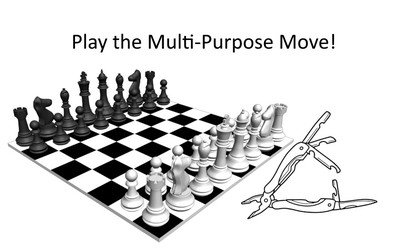
SWOT Analysis in Chess
Last time, in the Kodak post, we saw that business and chess have things i common. There are competitors to defeat, but most importantly they both need plans. Business managers need business plans, and chess players need game plans. So, perhaps we can use some business planning tools is chess?One of the most popular business planning tools is the SWOT Analysis, where SWOT stands for Strengths, Weaknesses, Opportunities and Threats. The idea is to take an inventory of all your business strengths and so on, and write them down in the respective quadrants. From there, you answer questions like "What business opportunities build on your strengths?", "What threats are caused by our weaknesses?", "How can we improve our strengths to create more opportunities?", and "How can we reduce our weaknesses to reduce the threats?"
That sounds a lot like chess, doesn't it? We deal with strengths, weaknesses, opportunities and threats all the time. So what can SWOT analysis bring to chess?
When we spot an opportunity in chess (or business), we tend to focus on that, and forget to consider our weaknesses and threats. Similarly, when we face a threat, we tend to forget our strengths and opportunities, and concentrate on defending against that threat, thereby missing eventual counter-attacking possibilities.
That's when SWOT analysis comes in handy. Properly performed, it forces us to assess the position from several angles (four of them) instead of just one. This can help us see possibilities that we'd otherwise could had missed.
Takeaway
Next time you feel the need to make a plan, visualise the SWOT chart, take a proper inventory, place each assert in the right quadrant, and see how they connect.
This article was previously published on my blog The Ordeals of a Club Player.
View more blog posts by Gyllenstierna

When to make a Change of Plans
Abandoning a plan that didn't work out is much harder than we think, no matter if we're running a bu…
Ten Mistakes
What are the ten most common mistakes in chess (or life, fishing, dating or whatever)?
Missed Opportunities
This is a casual correspondence game played under OTB rules, so no books, databases or chess engines…